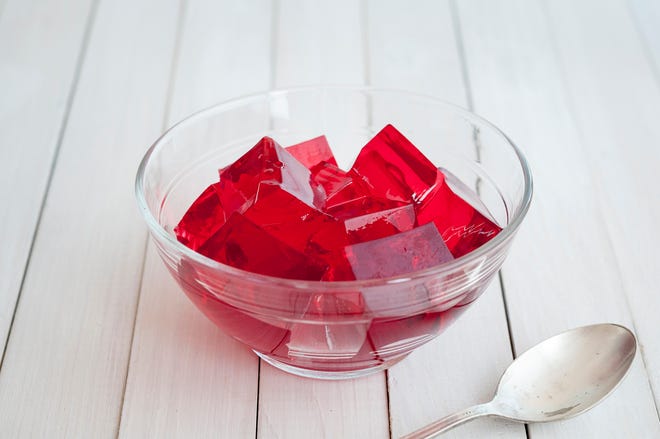Americans spent nearly $300 million worth of collagen supplements in 2020 with the world market expected to increase. As the most abundant protein in our body and the key structural component of our skin, muscles, bones, blood vessels, and connective tissue, it’s easy to understand the appeal of collagen.
A typical Western diet may not contain collagen, and our bodies produce less collagen over time due to the natural aging process or due to chronic inflammation, stress, nutritional deficiencies, or smoking. While there is no blood test to detect collagen levels, this decline can become apparent with wrinkling of the skin due to loss of elasticity, stiffer joints, intestinal or digestive problems, as well as a longer recovery time after an injury.
The market is oversaturated with collagen-based products, ranging from collagen peptides to bone broth proteins, all made in a variety of digestible media.
But lately, I’ve noticed a huge rise on social media of a supposed “alternative” to collagen: gelatin.
Are regular multivitamins worth it? A new study explores the benefits and harms.
Alkaline water:Should you splurge to make your body less acidic?
What is the difference between gelatin and collagen?
Nutritionally, gelatin is equivalent to collagen. A tablespoon of gelatin contains about six grams of protein. However, gelatin is not a complete protein and should not be considered a high protein source.
Gelatin and collagen share the same 19 amino acids. However, structurally they are quite different. Gelatin is basically a denatured and hydrolyzed form of collagen. This means that when you subject collagen’s triple helix structure to extreme heat and then water, you end up with shorter amino acid chains found in gelatin and also bone broth protein. You’ll also often see “collagen peptide” products; this just means that the collagen is further hydrolyzed by the enzymes used in the manufacturing process.
The digestibility of collagen and gelatin is essentially the same: both are highly digestible. Digestibility is measured as the percentage of amino acids in ingested protein that are absorbed (mainly in the small intestine) relative to the amount that is excreted.
Apple cider vinegar:People rely on it to lose weight. Does it really work?
Biotin Basics:Everyone talks about these supplements. This is what you need to know.
Gelatin is found in more than Jell-O
Most of us have tried gelatin like Jell-O (which has been around since 1890), either as a child or while in the hospital. When you add heat to the gelatin, the energy from the high temperature breaks the weak bonds that hold the gelatin together. Then, when the mixture is refrigerated, the chains reform but imperfectly, giving Jell-O its unique semi-solid structure.
Gelatin is also found in marshmallows, candy corn, gummy bears, and jelly beans. It is also commonly used in the preparation of various types of Chinese soup dumplings.
Collagen research focuses on skin elasticity and joint mobility
The quality of the research supporting collagen supplementation is mixed. Studies tend to focus on benefits such as improving skin elasticity and hydration Y reduction of joint pain and improvement of joint functionality. While some of the studies include a strong randomized control setup, I am concerned about potential conflict of interest, as the studies tend to be funded by industries that profit from the research.
I didn’t find any notable research studies looking at the benefits of gelatin directly, but since collagen and gelatin are essentially the same protein, we can safely attribute the identified benefits of collagen to gelatin.
However, it is important to note that gelatin is often mentioned on multiple social media forums as being preferred over collagen for those suffering from “leaky gut” which is a hypothesis for a number of conditions ranging from fibromyalgia to irritable bowel syndrome and celiac disease. Proponents of this hypothesis hold that a “leaky” intestinal wall that does not have enough collagen or gelatin “glue” will be more permeable to toxins and bacteria.
But the lining of our gastrointestinal tract (GI tract) is actually meant to be semi-permeable to allow absorption of water and other nutrients we eat. We don’t need to “plug” all the holes with gelatin, for example. However, chronic inflammation and some autoimmune diseases can cause erosions in the GI tract wall, leading to a hyperpermeable membrane. Essentially, “leaky gut” is a symptom that affects sufferers of these chronic debilitating diseases rather than a cause of them.
Do you have an injury? Should you look for an ice pack or a heating pad?
Plus:Why Epsom Salt Should Be A Staple In Your Home Medicine Cabinet
Many ways to enjoy gelatin
Truly, the main difference between collagen and gelatin is practical; What is the easiest way to consume it? I’ve found that powdered gelatin, well… gels… when added to hot or cold beverages, and this thick flavorless substance is difficult to drink.
The best way to reap the benefits of collagen, or gelatin, is to drink a cup of bone broth daily or add hydrolyzed collagen (collagen peptides) to a warm or cold beverage. Collagen peptides dissolve in hot or cold beverages and do not gel.
But if you like jello, I recommend homemade sugar free jello cups, jello squares, or healthy gummy snacks. Although Jell-O comes in sugar-free packages, I would avoid it because of the artificial sweeteners, flavors, and colors.
Michael Daignault, MD, is a board-certified emergency room physician in Los Angeles. He studied Global Health at Georgetown University and has a Bachelor of Medicine from Ben-Gurion University. He completed his emergency medicine residency training at Lincoln Medical Center in the South Bronx. He is also a former United States Peace Corps volunteer. Find it on Instagram @dr.daignault

